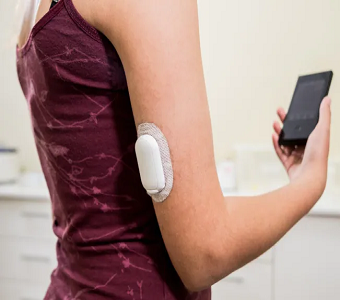The big news in obesity last week was that Pfizer’s Phase 2b data for twice-oral danuglipron flopped. Pfizer’s drug had high discontinuation as a result of high occurrences of gastrointestinal side effects. Up to 73% had nausea, 47% vomiting and 25% diarrhea. More than 50% of patients on the drug discontinued the study as a result. This flop left Pfizer no option but to shelve the twice-daily treatment as it was subpar when compared to Novo & Lilly’s already commercial drugs.
Pfizer has ongoing pharmacokinetic studies for a once-daily formulation of the same drug, but this has little chance of competing with the market leaders. The data from the twice-oral danuglipron has a strong read thru to this once-daily formulation. On news of Pfizer’s flop, the market bid up the other oral GLP-1 names, including (Structure) GPCR, Terns Pharma (TERN) and Viking (VKTX). This should also be a positive for Carmot’s upcoming IPO as there is one less oral competitor in the space.
There’s a belief that Pfizer will be looking to add another GLP-1 into their pipeline through acquisition, which fueled the rally of GPCR/TERN/VKTX last week. If Pfizer does go this M&A route, they will likely decide to acquire a mid-late stage oral GLP asset, rather than a Phase 1. This leaves only GPCR currently, but VKTX/Carmot should have oral data for their oral treatments in 2024. Last month, Pfizer began a phase 1 trial of another oral GLP-1 asset, PF-06954522, that grew out of its work with Japanese partner Sosei Heptares
Real-World Data Study
There was an overlooked obesity dataset from last week, which is one of the first large datasets looking at how GLPs are used in the real-world setting, not just controlled trials. A real-world population study tracked 41,223 patients that were either on Novo’s semaglutide (32,030) or Lilly’s tirzapatide (9,193). The aim was to compare the treatment weight change between semaglutide and tirzepatide for obese and T2D patients.
Across 3, 6 and 12 months, Lilly’s tirzepatide (Mounjaro/Zepbound) yielded more weight loss compared to semaglutide (Ozempic/Wegovy). This finding was consistent with trials as Lilly’s drug resulted in greater weight loss there as well.

However, the amount of weight loss differed in this real-world study compared to clinical trials. This is to be expected as trials push to enroll highly motivated participants, and the protocol and clinical trial sites do everything in their power to encourage adherence and compliance, thus resulting in “superior” results. In this real-world study, obese patients on tirzepatide lost approximately 15% of their body weight after 12 months. Those on semaglutide lost about 10%.
In trials, trizepatide hit about 20% after 12 months, while semaglutide was 15%. This real-world data demonstrate the realistic results of what is possible with GLP-1.
There were no significant differences in the risk of gastrointestinal adverse events between tirzepatide vs semaglutide. However, this large patient study of >40K people does give insights into the incidence rates of serious side effects from weight loss treatments.
Gastroenteritis (infection and inflammation of the digestive system) was the most common serious event present in about 20/1000 people (2%), followed by Cholelithiasis (gallstones) in about 1.4%.

Bottom line: In this real-world study, obese patients on tirzepatide lost approximately 15% of their body weight after 12 months. Those on semaglutide lost about 10%. The weight loss data is slightly lower than what these drugs reported in clinical trials. This can be attributed to the strict protocols that trials operate with, including enrolling motivated patients. The same oversight is not available in the real world. The real-world dataset is a better representation of the realistic results of GLP-1 treatments.
What does this mean?
The current commercially available treatments, as well as the pipeline candidates, are game changers. There will be several multi-billion-dollar drugs as a result of obesity. However, we are skeptical about whether GLP-1s will be able to dramatically change the course of America’s obesity epidemic.
Ozempic will not eat into the businesses of Pepsi, Coca-Cola or McDonald’s. Weight loss drugs will not save airlines millions, as a result of slimmer passengers. 40% of Americans are overweight and that number is growing.
Continuous glucose monitoring players, like Dexcom (DXCM) and Abbott (ABT), actually have put out data that GLP-1 therapy increases access to their technology (read here). They serve as companion therapy to other diabetes treatments, including GLP-1. CGM provides data and insights to help modify behavior in the short and long term, while also driving higher therapy compliance and more durable outcomes.
Similarly, diabetic insulin pump players won’t see their businesses dwindle by weight loss treatments. Diabetes is a progressive disease and at some point in their life, patients will eventually benefit from insulin pumps. Not to mention that the majority of existing business for pump players are type 1 diabetes patients, who are not impacted by GLP-1 at all. So, Insulet (PODD), Tandem (TNDM) and Modular Medical (MODD) seem safe.
Bottom Line: Weight-loss treatments are valuable tools in a toolbox that will be needed to fight the ongoing obesity epidemic, but they won’t end it.
Access This Content Now
Sign Up Now!




